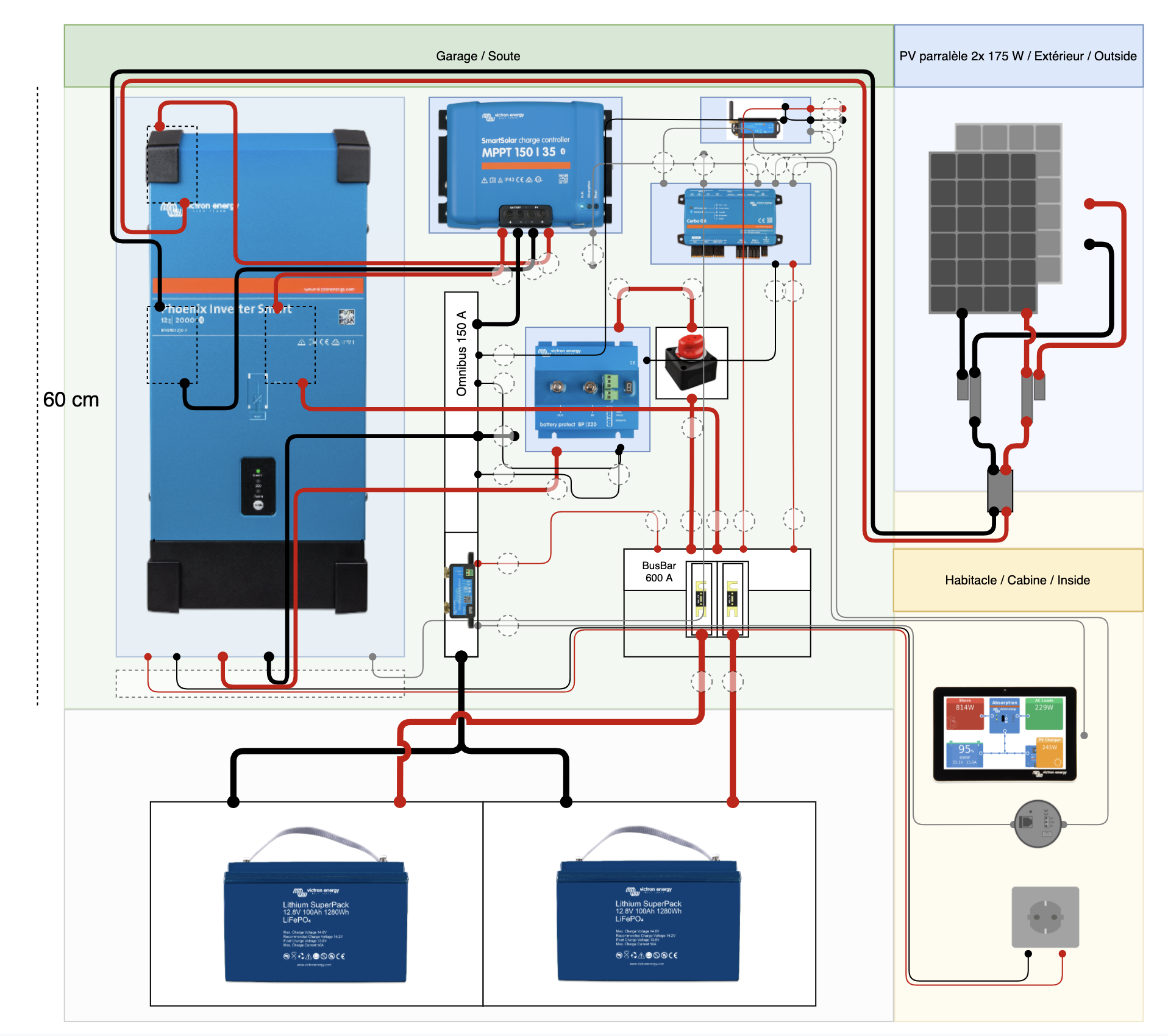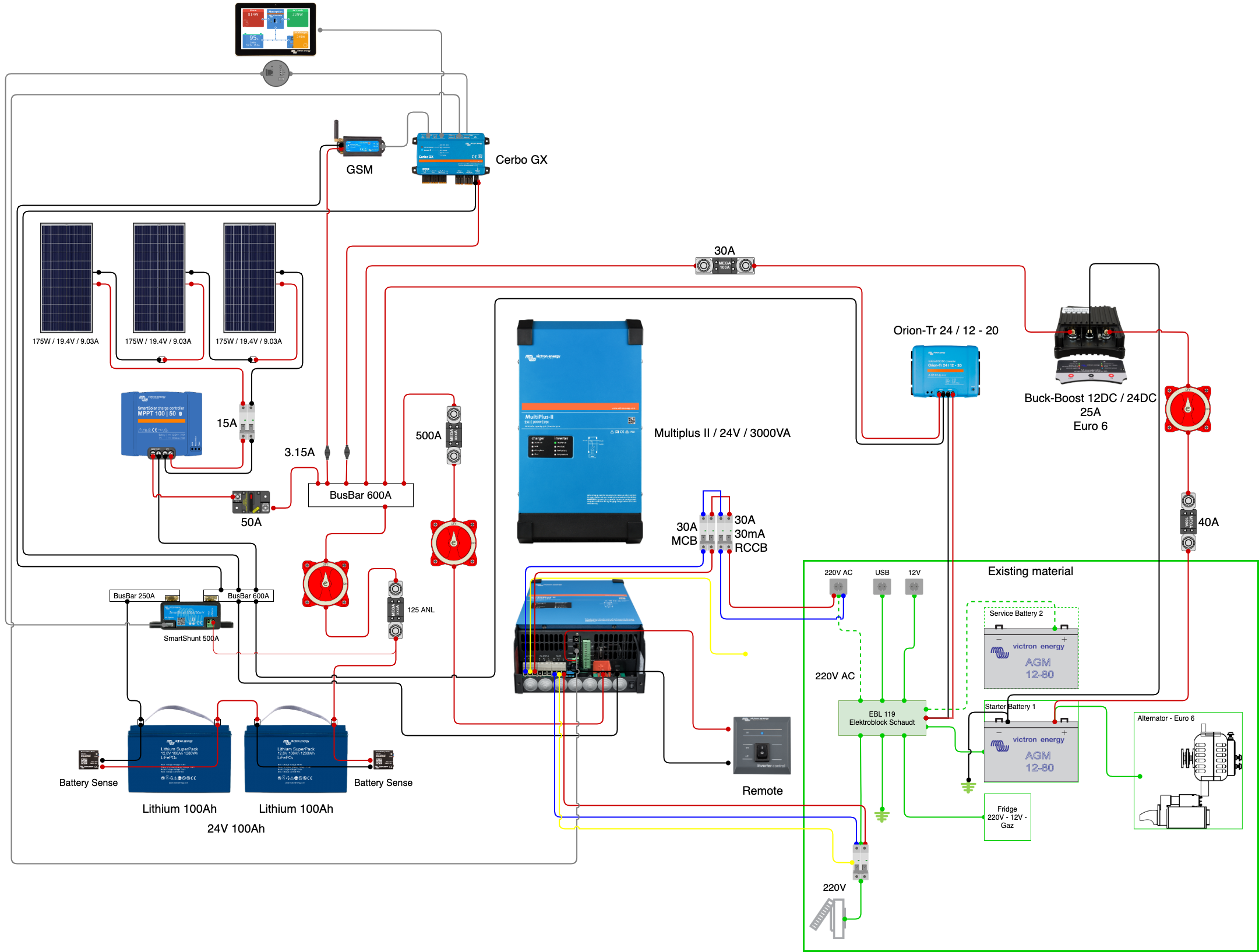Hi Folks
Before installing my system in my motorhome, I wanted to submit to your experiences on this installation.
The green part is the support panel. The cables pass through the rounds to pass to the rear. This forms like a door with a hinge to facilitate assembly and to carry out subsequent additions of elements. The dimensions of all elements are exact dimensions in mm. The thin cables are in 2.5mm2 or VE.Direct or USB, the medium ones in 16mm2, the batteries in 35mm2. The battery fuses are 175 ANL. The red lines are + or Line or Phase, the black lines are - or Neutral.
No cables cross and the support panel is 80 cm x 60 cm, made of fireproof wood. Did I miss something in this assembly diagram?
I thank you in advance.


